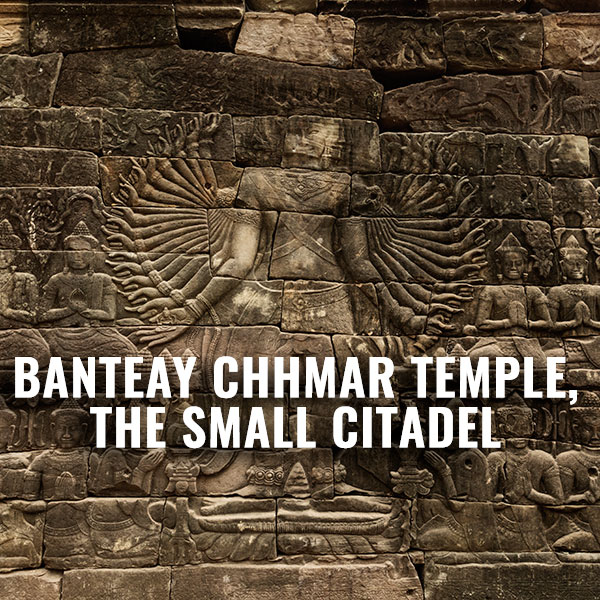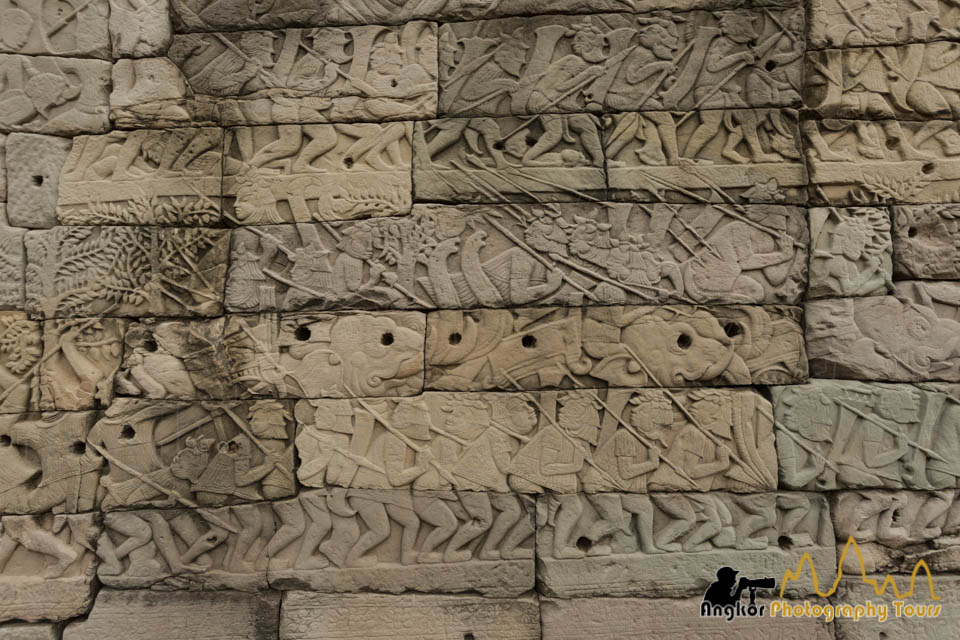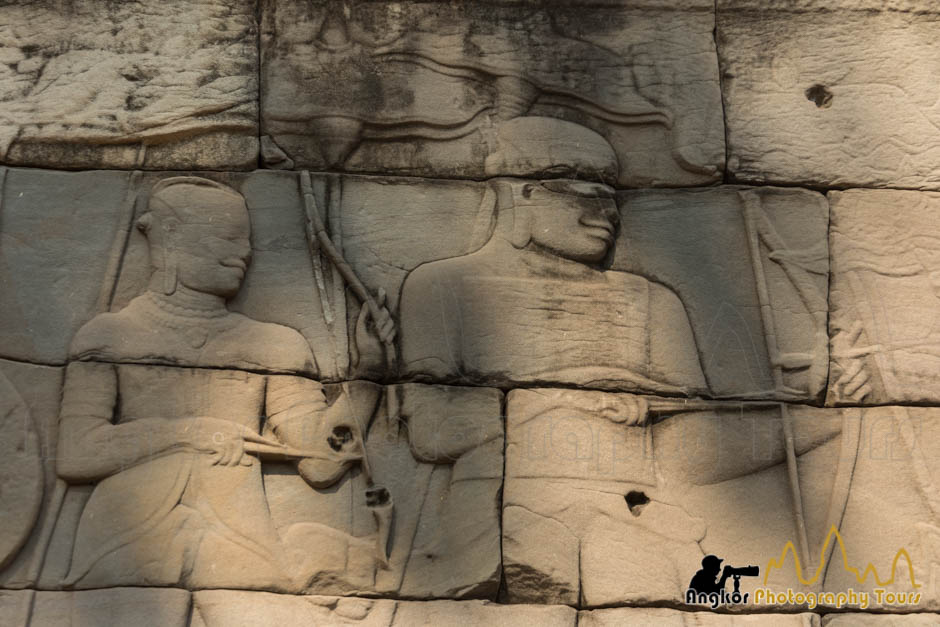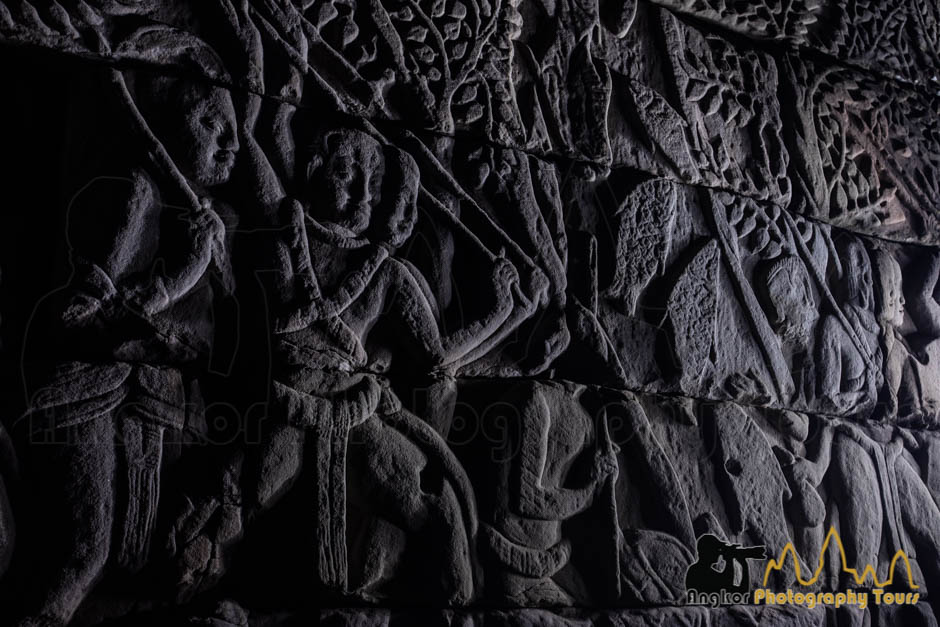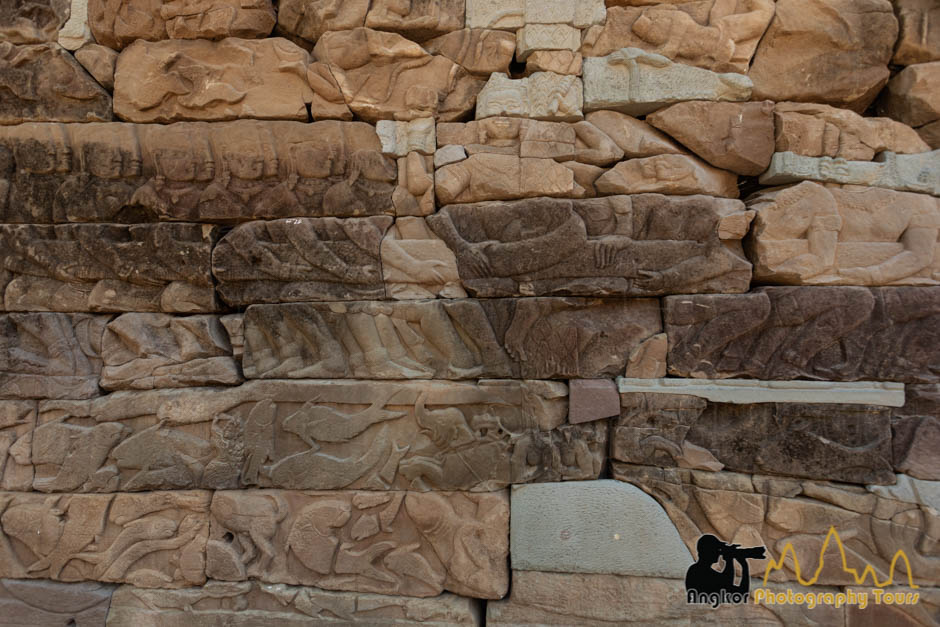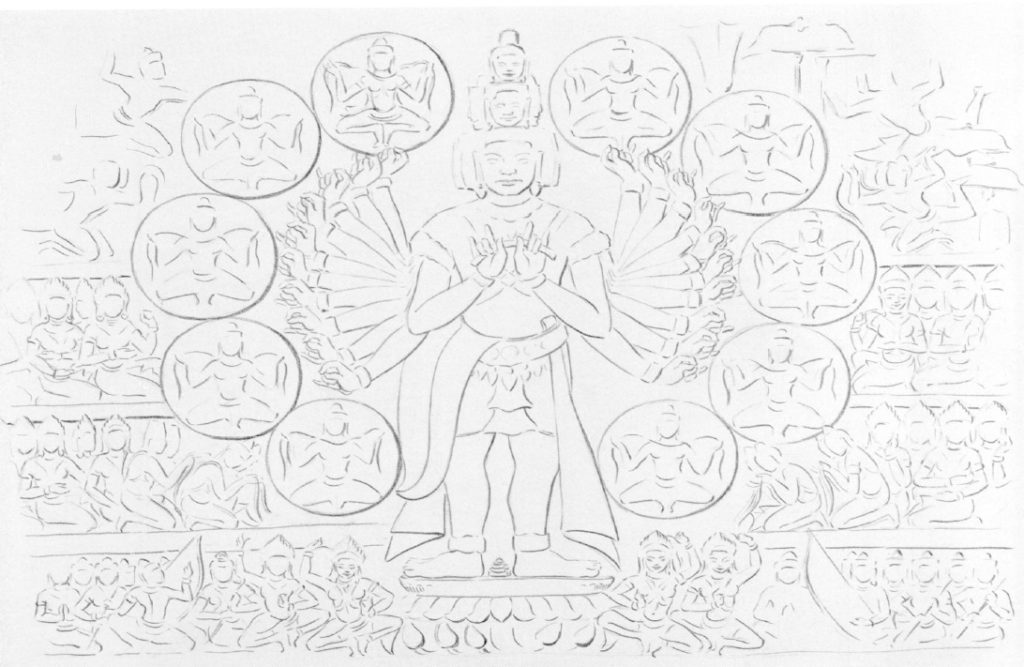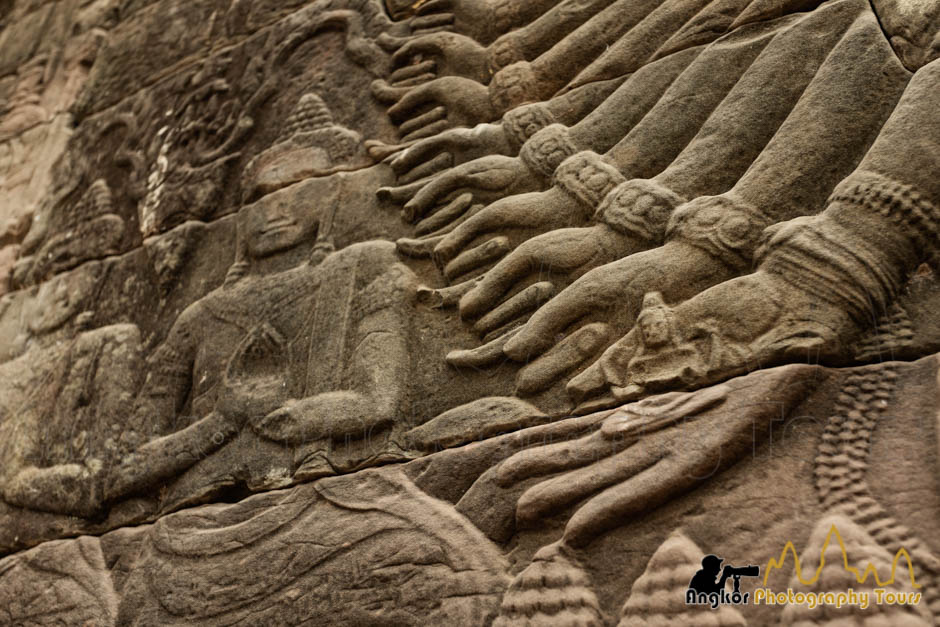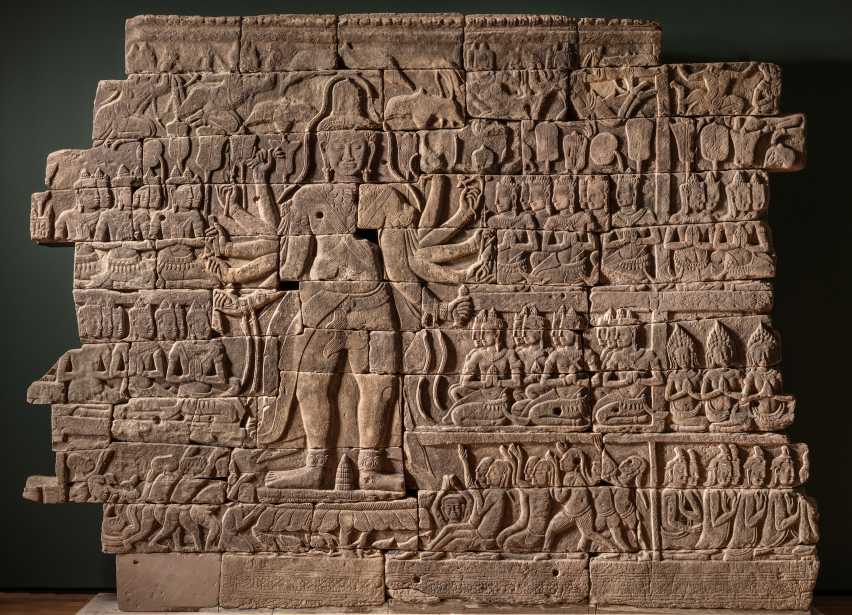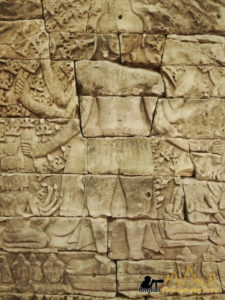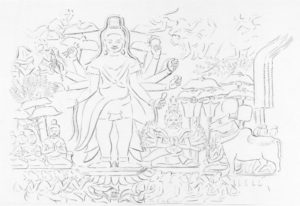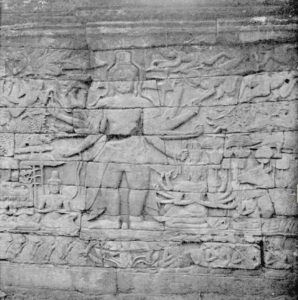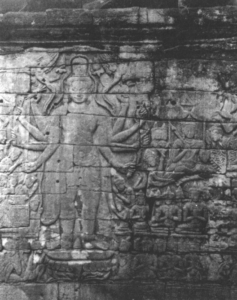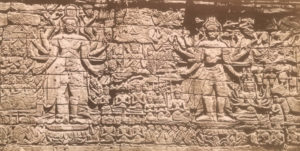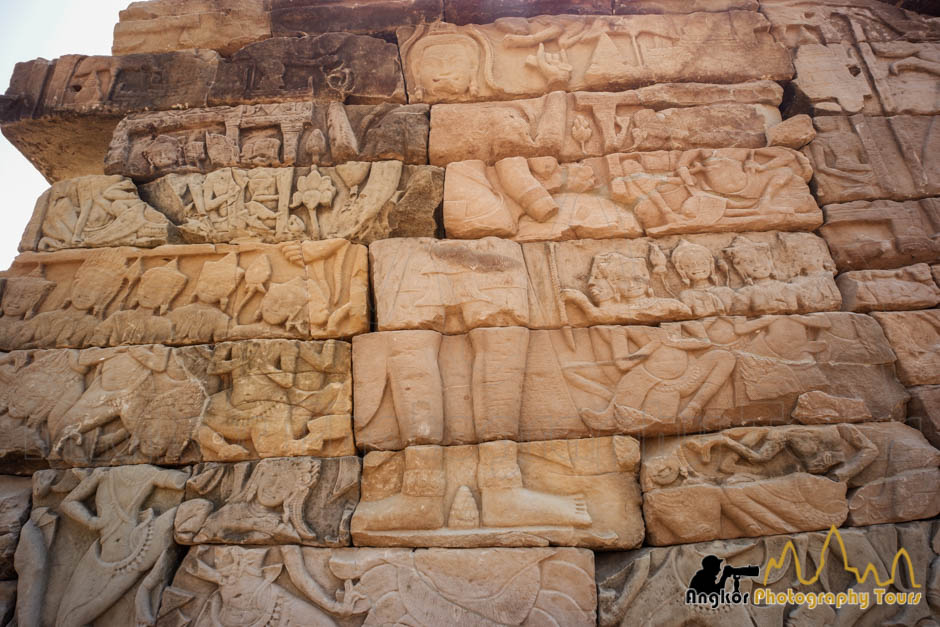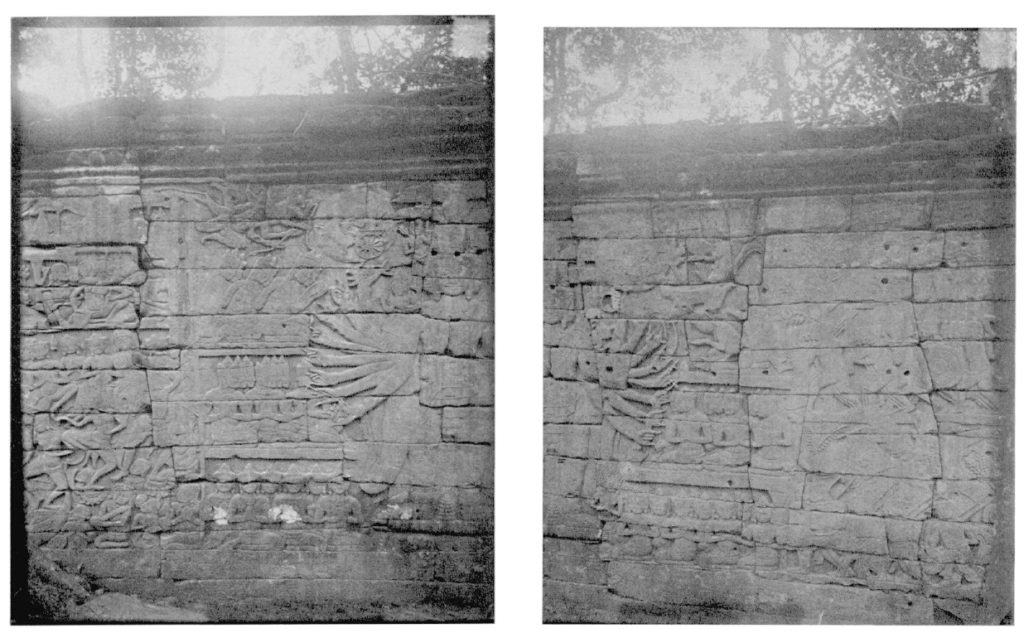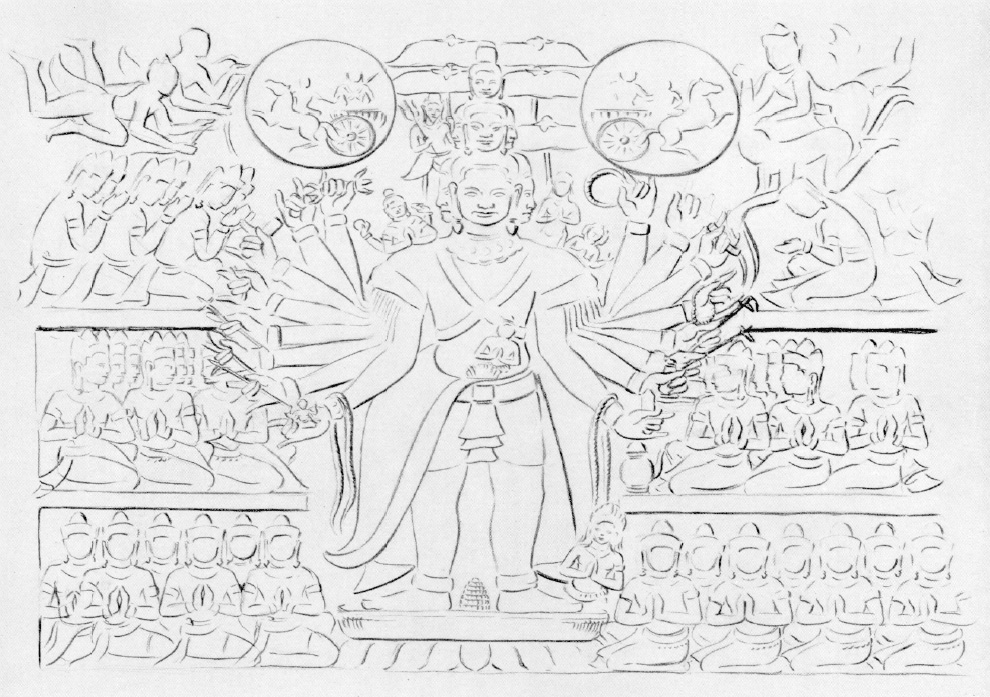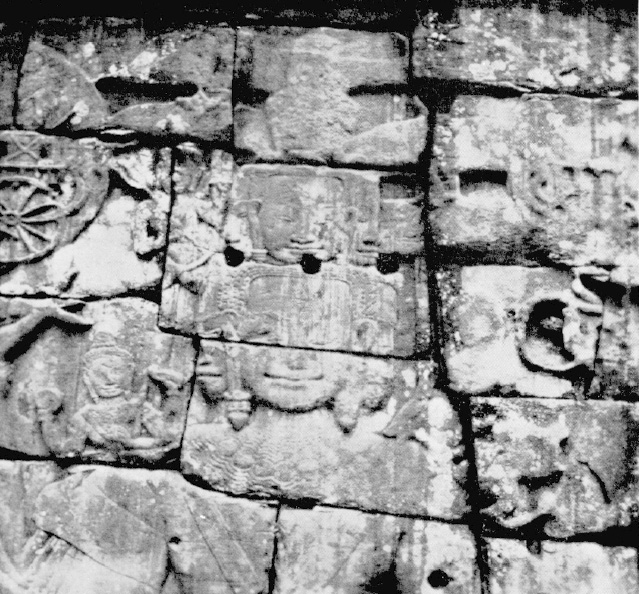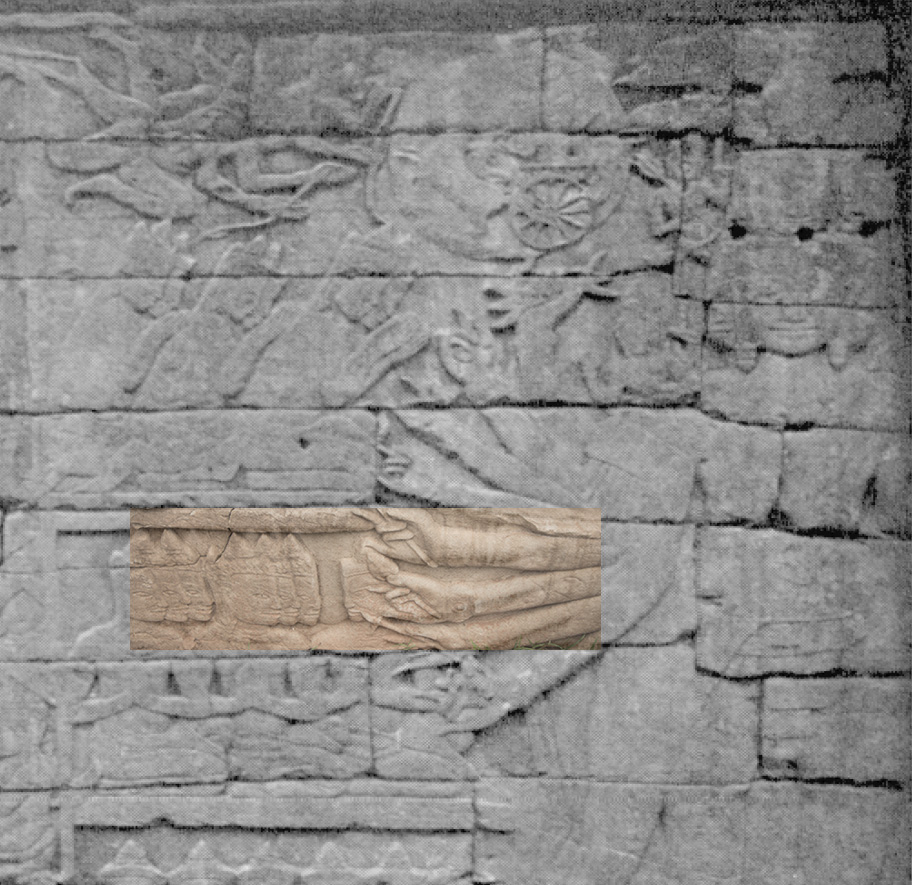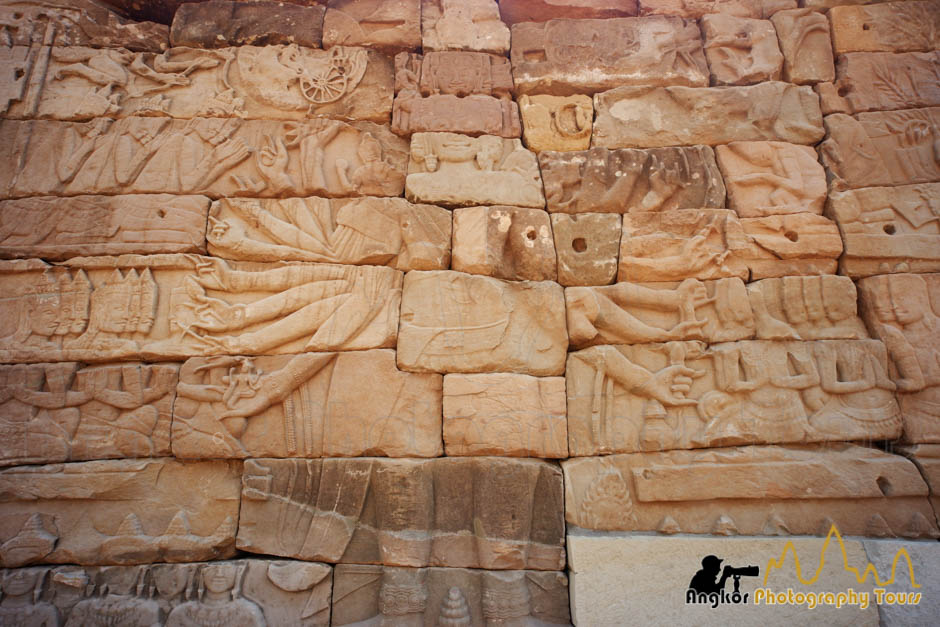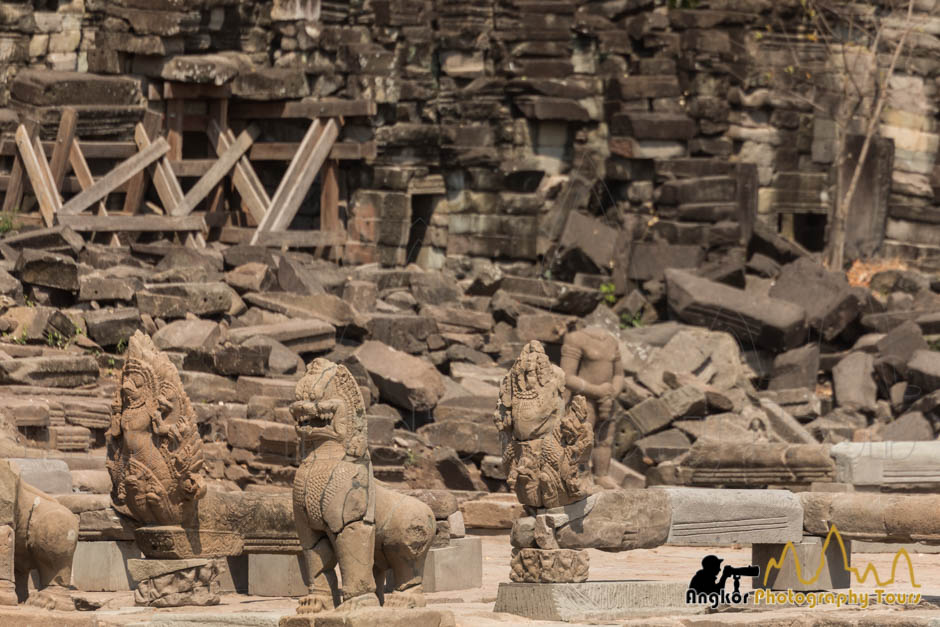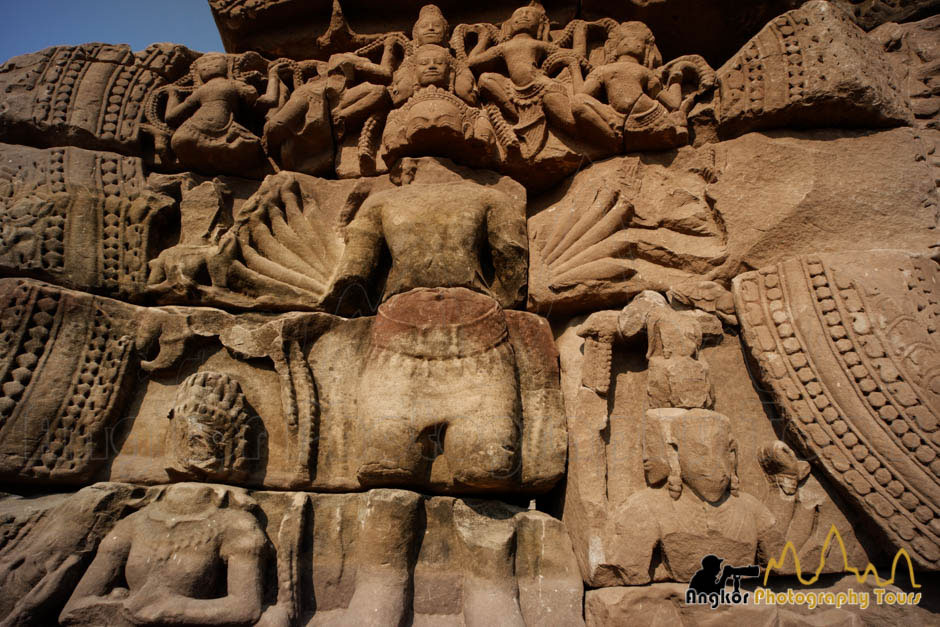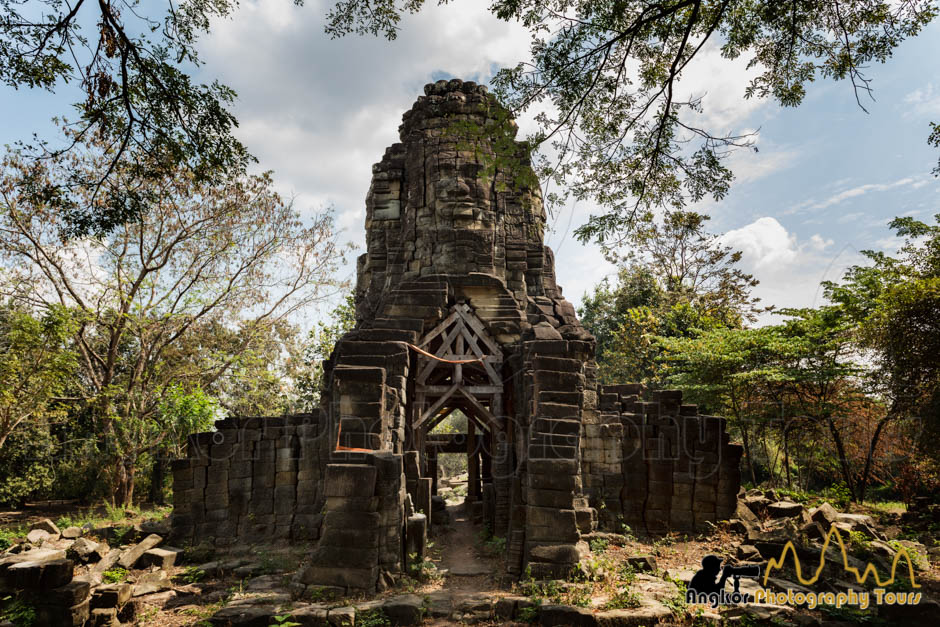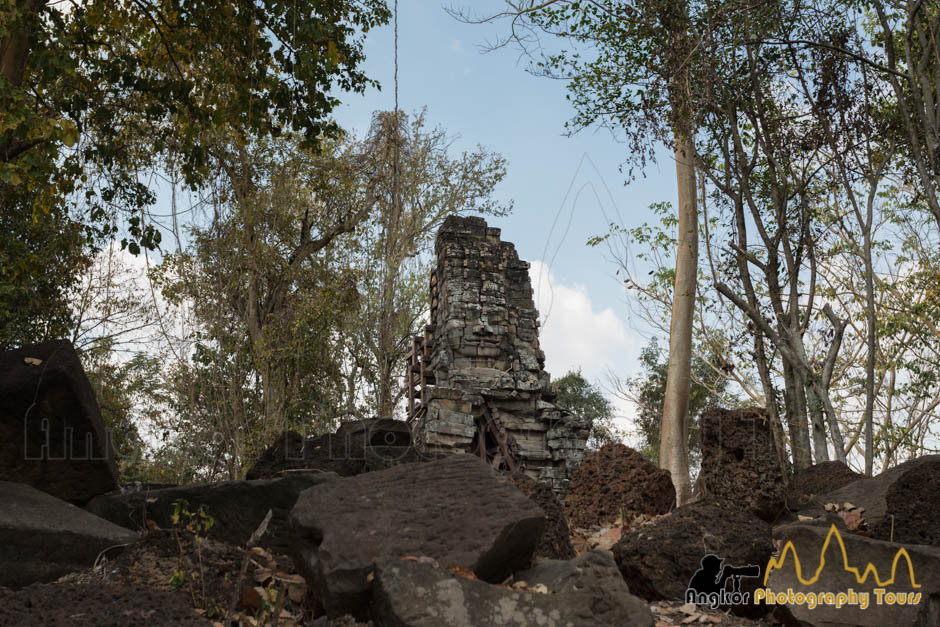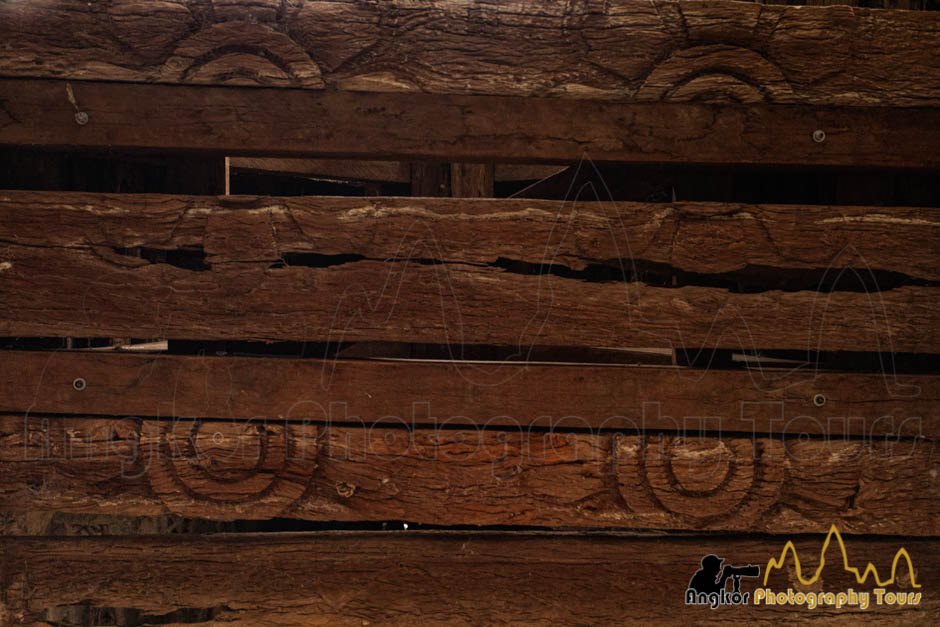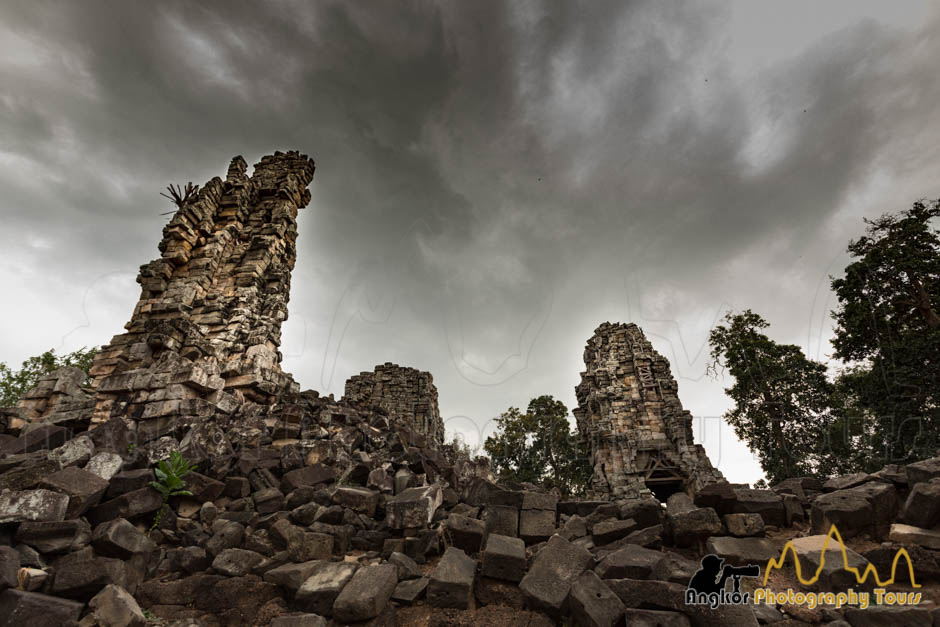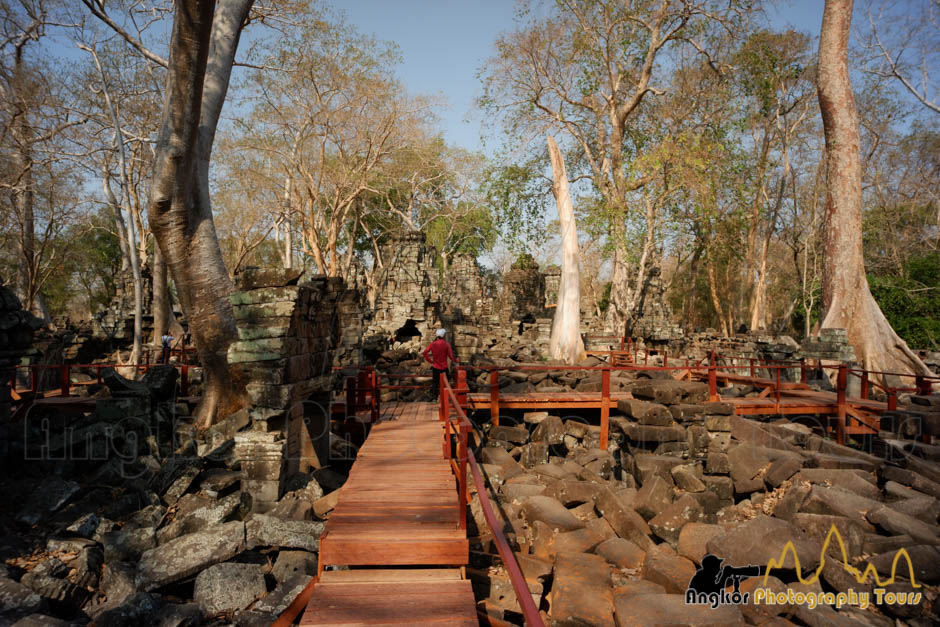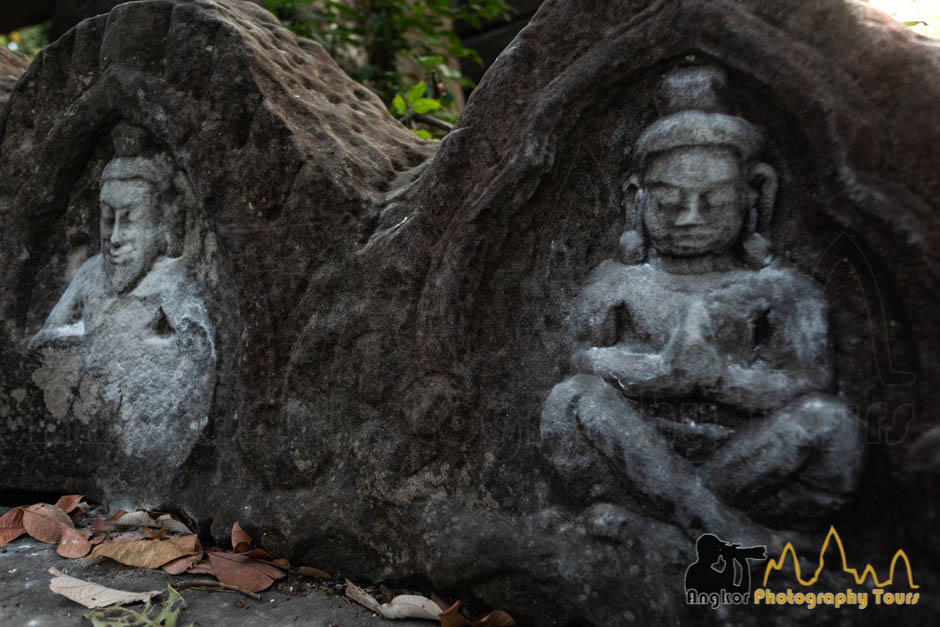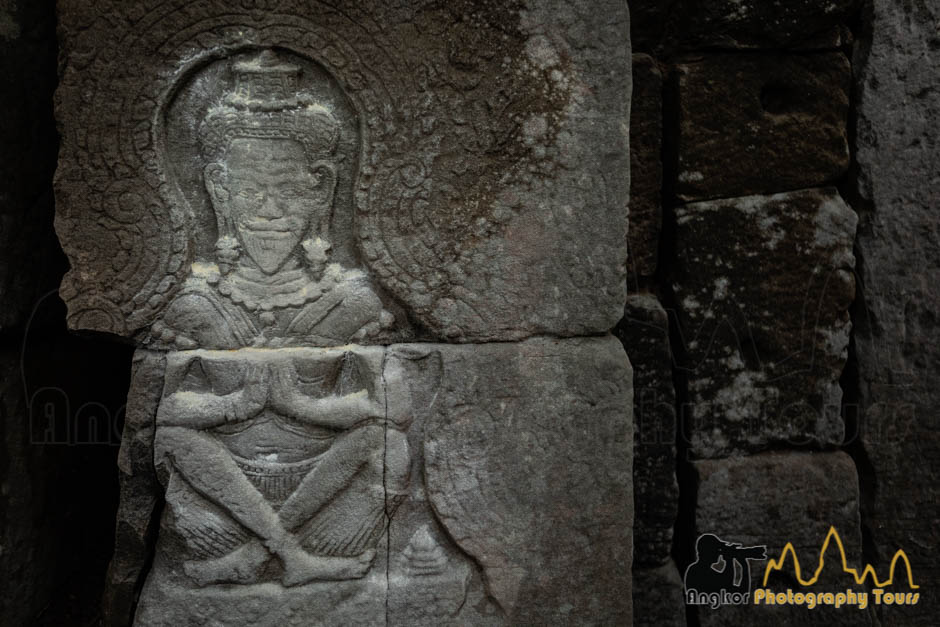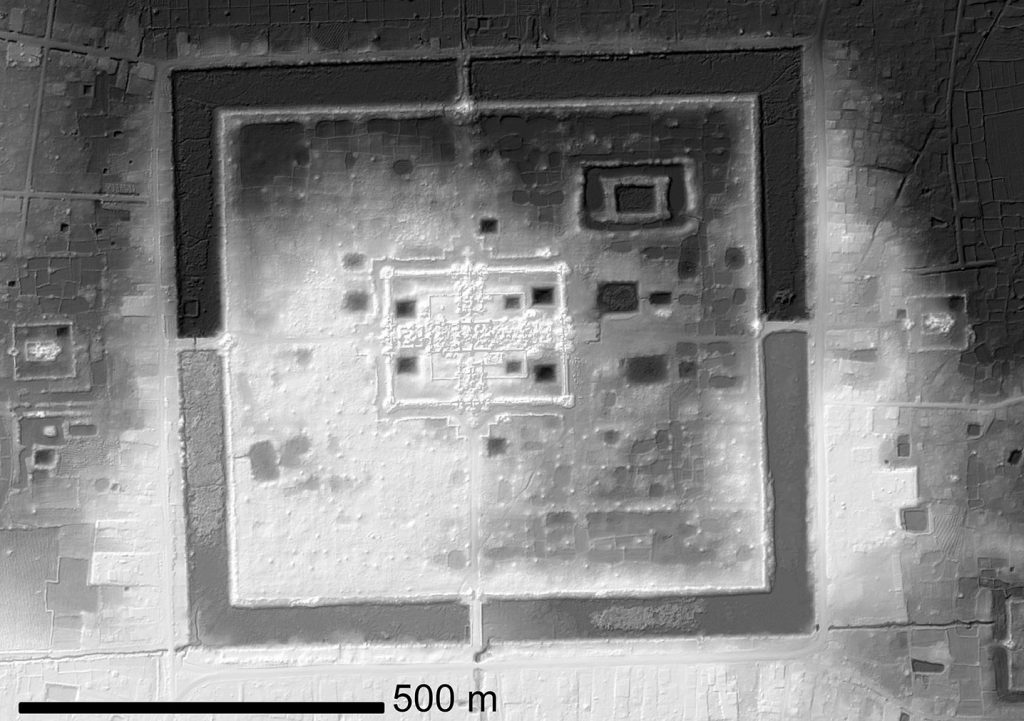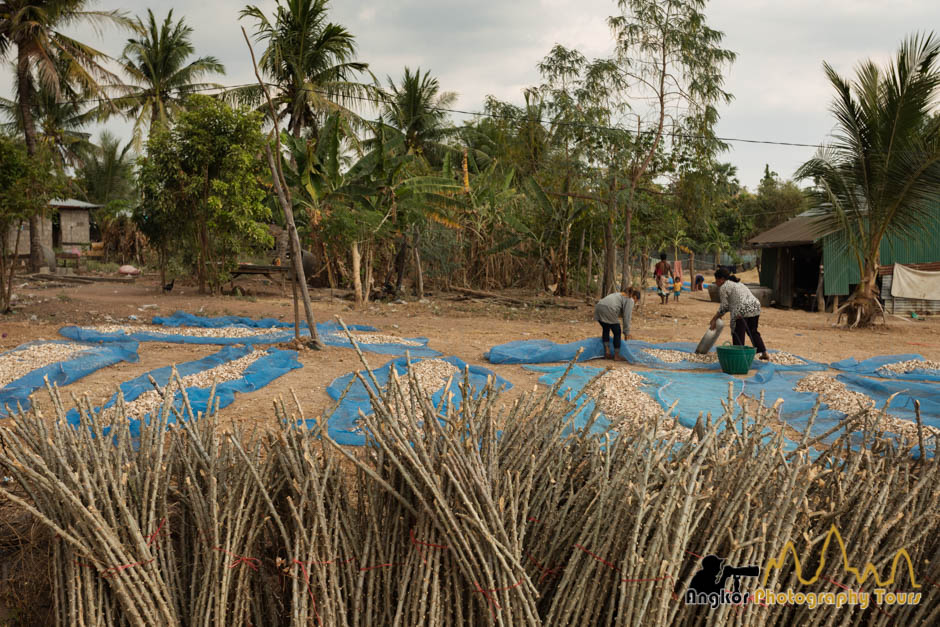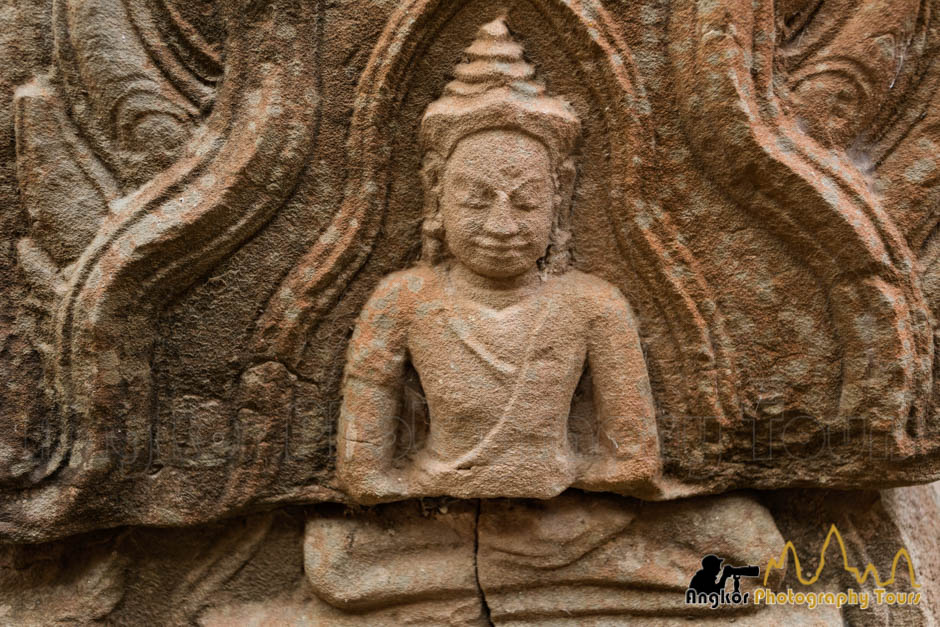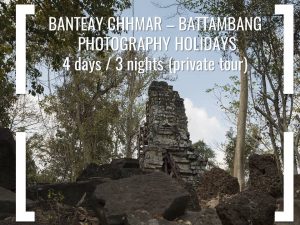Last update: January 2021
Banteay Chhmar temple is the fourth largest temple complex in Cambodia and one of the biggest in the world, situated about 164 km north east of Siem Reap (Banteay Meanchey Province), nearby the Dangrek mountain range in the border with Thailand. Since 2010, thanks to a new road, Banteay Chhmar temple is only one hour drive from Sisophon on the highway 56 and about three-hour drive from Siem Reap. Another way of reaching Banteay Chhmar from Siem Reap is to take the road 68 north of Kralanh and the road 56 west
Banteay Chhmar temple history
Banteay Chhmar, also known as the small citadel, is a massive temple complex oriented west-east with 5 enclosures (2.2 by 1.7 kilometers) and 4 entrances. It is surrounded by a 6 meters wide moat it has also a large Baray on the east with its own temple on the center.
The temple complex was commissioned by King Jayavarman VII during the late 12th century, begging of 13th century and dedicated to his son.
It is sometime described as a twin hub of the Khmer empire because of its size and its layout containing a large main temple with extensive carved walls, many satellite temples and a complex hydraulic system.
Banteay Chhmar follows the Bayon style and has also many face towers. According to George Groslier who surveyed Banteay Chhmar in 1920’s and 1930’s, counted a total of 56 towers.
As this temple was left in the nature for 800 years, it suffered considerable damages and only 10 towers are still standing with only few face towers. Even in the 1920’s, Groslier mantioned that the temple was only accessible two months a year…
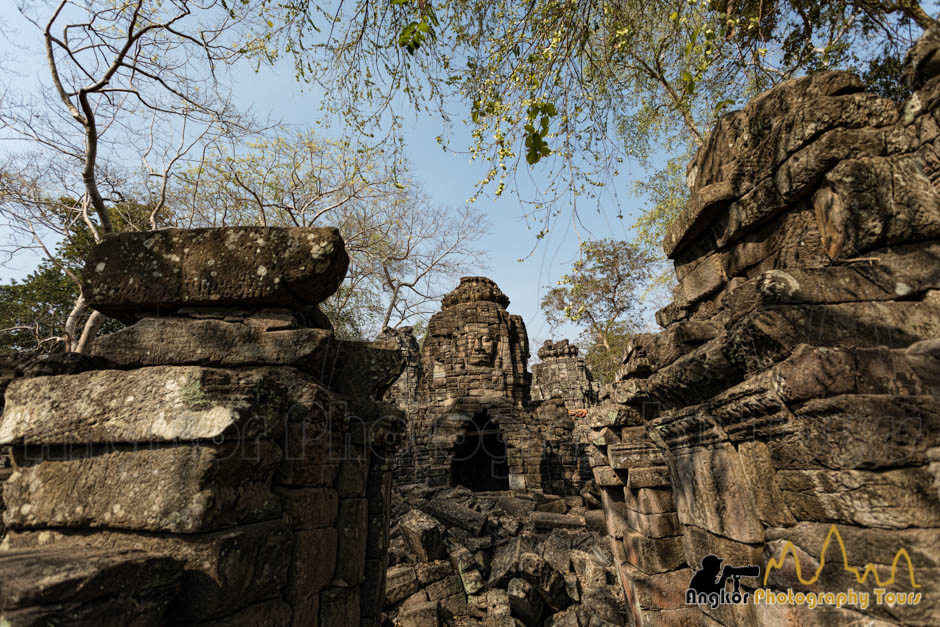

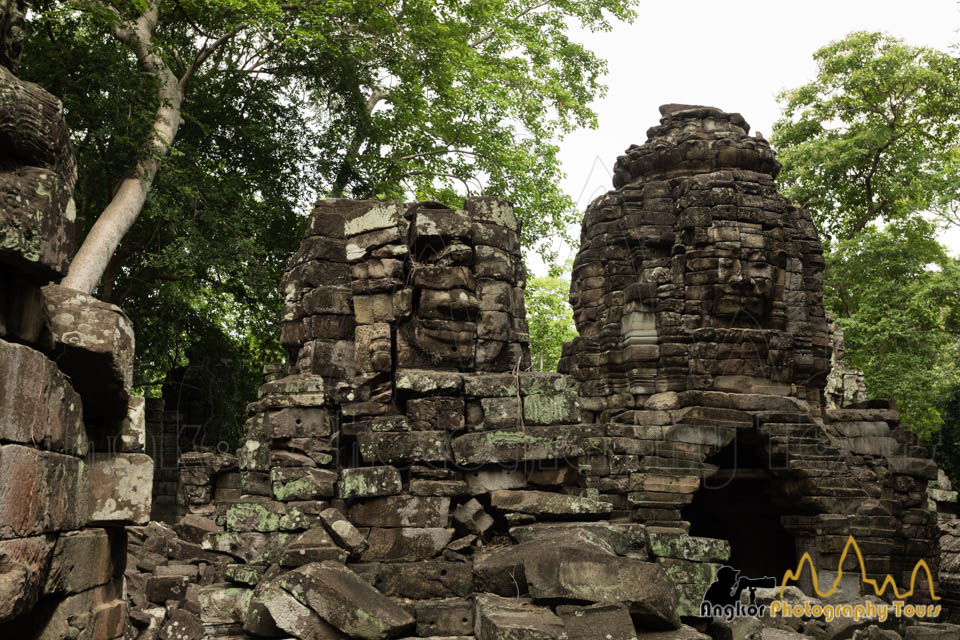
Banteay Chhmar bas-reliefs
Eastern Gallery
The Eastern gallery is rich in bas-reliefs, similar to the ones in Bayon temple depicting scenes of war and everyday life. It was restored in 2008 during the GHF project.
Bas -relief with war scenes – eastern wall
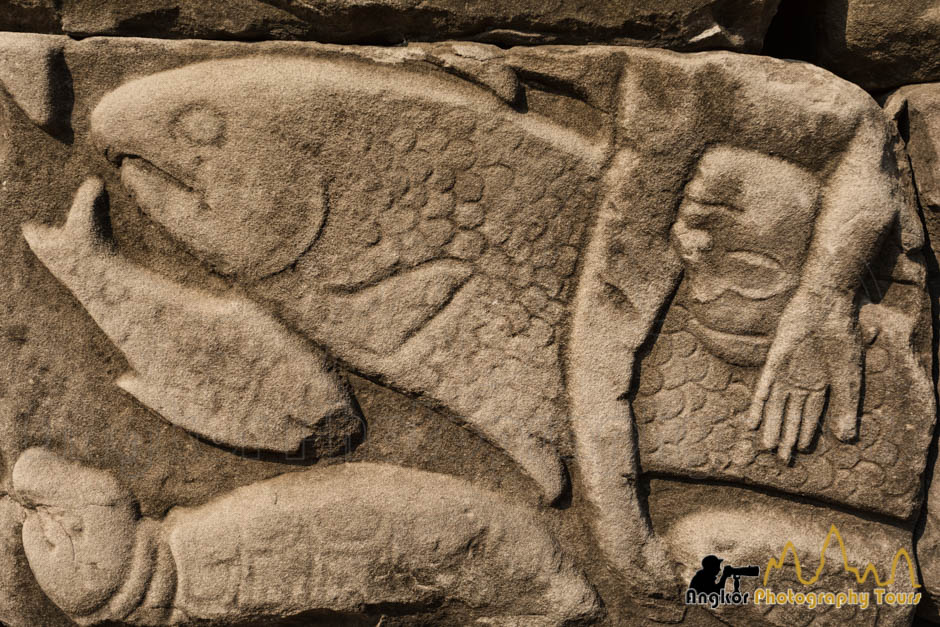
Bas-relief detail of the Eastern wall depicting Jayavarman VII and a young prince (his son?)
Western Gallery (Avalokisteshvara’s wall)
The western gallery is famous for its Avalokiteshvara’s bas-reliefs. Originally, 8 multi-armed Avalokiteshvara were carved on this wall, two of them were under the rubles for many year and back on the wall since 2018 only. The two missing were stolen, and the last two are now exhibited at the Phnom Penh National Museum.
The southern part of the wall was restored as well in 2018, with many bas-reliefs visible including the famous churning of the sea milk story below.
Northern section (22 and 32 arms)
In the northern part of the wall are two beautiful bas-relief of Avalokiteshvara with 22 and 32 arms situated on each side of a door. The 32-armed Avalokisteshava is multi-headed but it is difficult to make out the details even on an digitally enhanced picture
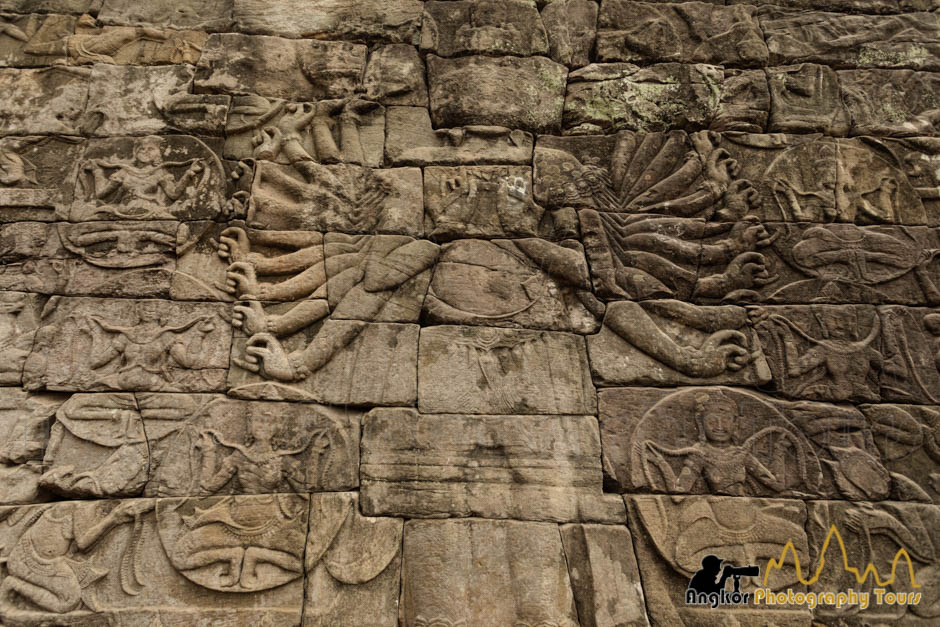
Sketch of the 22-armed Avalokiteshvara (Jean Boisselier, 1965). 11 heads (?) on 3 levels.
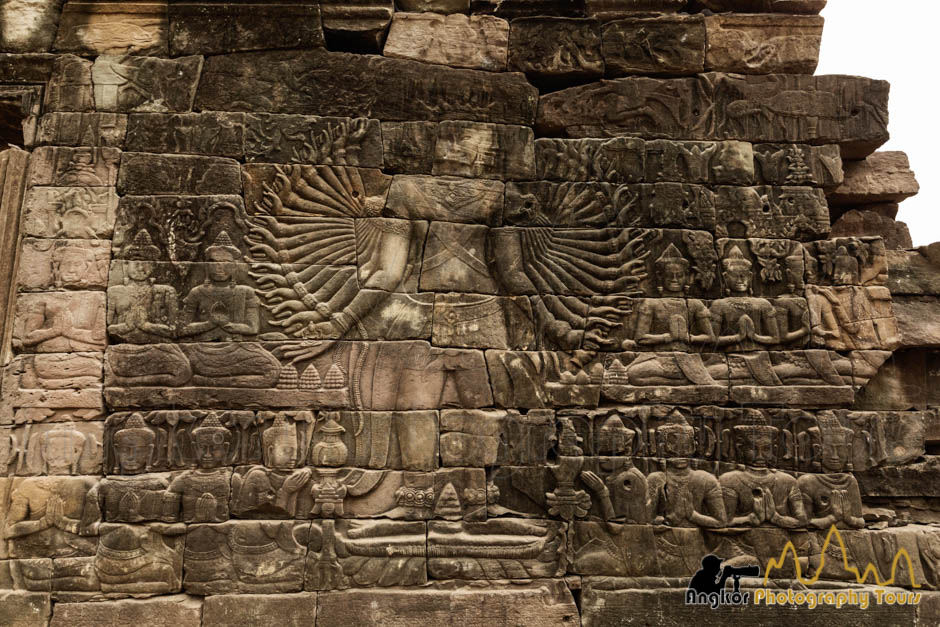
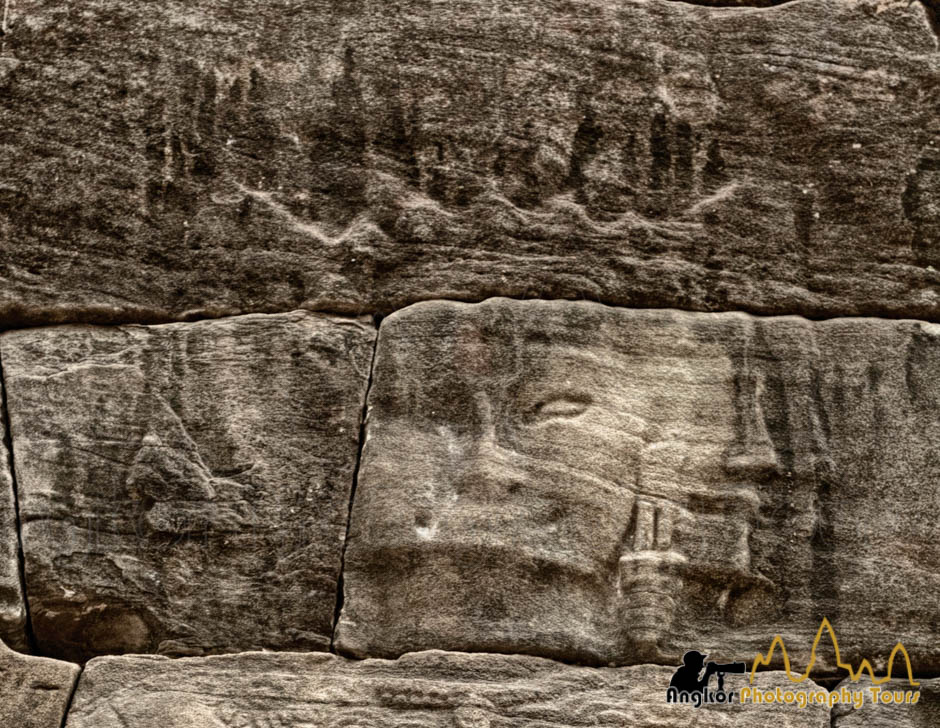
Details of the 32-arms Avalokiteshvara holding a small Buddha
Central section (10-6-8-8 arms) Before and After
Walking south, there is a 12-metres gap in the wall: in January 1999, an organized group of thieves dismantled 4 images and were intercepted later in Thailand with 177 pieces of sandstone . Unfortunately 5 out of 6 trucks carrying artifacts managed to escape making the heist of 1999 one of the biggest ever in an Angkorian temple. The New York Times published a piece called Raiders of Lost Art Loot Temples in Cambodia in April 1999.
The recovered 10-armed and 6-armed Avalokiteshvara (connected to each other) are now housed at the National Museum in Phnom Penh (in october 2017, the 10-arms was loaned to Cleveland museum in USA).
10-arms Avalokiteshvara (photo credit: Cleveland museum). 53 blocks of sandstone. Dimensions: 275 x 325 x 22 cm
6-arms Avalokiteshvara displayed at the National Museum in Phnom Penh
Walking further south, the gap continues with once was the location of two Lokeshvara. Jean Boitellier took pictures of this section in 1965 so we know that its was two 8-armed Avalokiteshvara.
Sketch of the 8-armed Avalokiteshvara (Jean Boisselier, 1965). It was stolen in 1998 and still missing
Picture of one the 8-armed Avalokiteshvara (Jean Boisselier, 1965). It was stolen in 1998 and still missing
Picture of one the 8-armed Avalokiteshvara (Jean Boisselier, 1965). It was stolen in 1998 and still missing
Southern section (4-16 arms) Before and After
Under the rumbles of the southern part of the wall are believed for a long time to lay the two last Avalokiteshvara. A privately funded project was successfully completed in July 2018 to put back the 2 images back. The 16-arms Avalokiteshvara documented by Jean Boisselier in 1965 is back on with few pieces missing only on the bottom right corner.
Surprisingly the other Avalokisteshvara was found under the rubles and put back have only 4 arms which is the lower number of arms in the whole serie of eight. This piece was not documented in 1965.
4-armed Avalokiteshvara back on the wall (taken in March 2019)

Picture of the 16-armed Avalokiteshvara (Jean Boisselier, 1965)
Sketch of the 16-armed Avalokiteshvara (Jean Boisselier, 1965)
16-armed Avalokiteshvara head close-up (Jean Boisselier, 1965)
Sandstone block discovered under the rumbles (June 2018) a perfect match with the 16-armed Avalokiteshvara
16-armed Avalokiteshvara back on the wall (taken in March 2019)
All 8 images have some common features: the lokiteshvara stands on a lotus flower and surrounded by three layers of devotees layers and apsara
Research and Conservation Work
Even though the French explorer Etienne Aymonier first visited the citadel in 1911, it is not before 1924 that the first archaeological surveys were done out by George Groslier and subsequently in 1934 and 1935. Groslier described the temple in a pity state with only few face towers standing. He took many photographs which were later priceless to archaeology research.
Banteay Chhmar was added to UNESCO tentative list in 1992, the same year that Angkor Wat temple was listed UNESCO World Heritage site. Because of its remote location, like Preah Khan of Kampong Svay, Banteay Chhmar was unfortunately the target of extensive lootings in the 1990s.
In 2008, the Global Heritage Fund (GHF) setup a multi-year project with stakeholders such as The Ministry of Culture & Fine Arts, the government of Cambodia and people living in the vicinity of the temple. Led by Dr John Sanday, this project ended in 2015, was a success in restoring the temple, training Cambodians but also providing the base for a sustainable tourism by setting up a community based tourism called CBT. Dr Olivier Cunin, an expert on Banteay Chhmar, built an impressive 3D model. He concluded that the temple was built in different stages, and the same time than some structures of Bayon and Preah Khan temples. A video of the 3D model made by Dr Cunin can be watched here (starts at 5’15”).
A private funded restoration work financed by H.E. Mao Malay Ken Kimyan started in 2018 on the Avalokisteshvarawall and unnearthed two images on a collapsed section of the western wall (see above). Another project started in september 2018 on the eastern terrace, a lintel with Avalokisteshvara was uncovered at the beginning of 2019 as well as two lions. (see below).
Another project completed 2018 was to put back up the wall on the southern part of the west gallery which has also many bas-reliefs with missing parts.
Among them is a bas-relief describing the churning of the sea of milk but unfortunately the turtle carrying Vishu was never found
Photo Gallery | Banteay Chhmar
- Eastern Terrace
Lion statue uncovered in 2019 at the eastern terrace
Lintel with Avalokiteshvara uncovered in 2019 on the eastern terrace
- Satellite temples
Original wood ceiling on one of the satellite temple
New visitor platform set up at the end of 2018 to get easier access to the center of the main temple
- Mebon temple
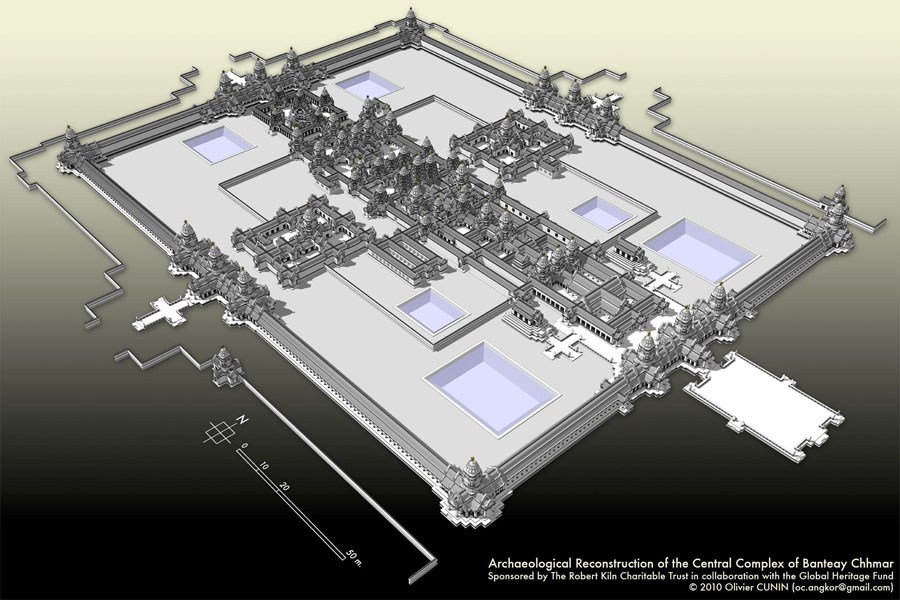
Banteay Chhmar LIDAR map (Dr Damian Evans, 2016)
Why it is worth visiting Banteay Chhmar?
With the growing popularity of Angkor, especially the top three temples (Angkor Wat, Ta Prohm, Bayon), it is increasingly difficult to appreciate their beauty and take pictures. In Banteay Chhmar, you can walk among the ruins alone and still have this feeling of mystery and adventure. You can forget also the many ticket checkpoints of Angkor, just sign a book at the entrance and you are all set; difficult to believe but no tickets will be delivered to you and if you are coming back the same day you just have to point your name on the book. The entrance fee is only USD 5 which is the same price than Beng Mealea temple.
If you feel more adventurous you can go outside the main temple and visit the 9 satellite temples built during the same period: of particular interest are Ta Prohm, Prasat Samnang and Ta Nem. If you look carefully you might even spot two original wooden ceiling in one of them. If you have time, it is worth strolling in the village and have a look at the farmers working on the culture of manioc.
Local farmers processing manioc before exporting to nearby Thailand
Due to its remote location, the site escaped the iconoclastic reaction which took place in Angkor when almost all of the Buddha images in the Jayavarman VII’s temples is Angkor were destroyed or altered (Ta Prohm, Preah Khan, Bayon,…).
Buddha image
In 2017, the archaeological site received its highest number of tourists with 2200 visitors, a sharp 300% increase from 2008. To put things into perspective, Angkor Wat temple receives about 10 000 visitors on a busy day. We therefore strongly suggest to go to Banteay Chhmar after Angkor Wat and not the other way around…
Community-based tourism at Banteay Chhmar
To add to your experience, we recommend to sleep at one of the homestays of the CBT to immerse yourself and have the chance to enter the temple early to take advantage of the golden hour. Some of them are only few hundred meters away from the temple. Booking is recommended as CBT can only accommodate about 40 persons.
Note: since the start of the pandemic in March 2020, some changes have been made at the CBT:
- The main CBT office have been relocated from the east to the west side of the main temple
- Homestays are closed. As an alternative, instead it is possible to spend time in a tented camp at Banteay Chhmar temple along with catering services.
Banteay Chhmar | Related Videos
BEYOND ANGKOR: CAMBODIA SCULPTURE FROM BANTEAY CHHMAR (2017 Cleveland Museum of Art. English, 6 min)
watch online: Complete (6 min)
The Heritage Curse (2012 Al Jazeera, 101 East. English, 25 min)
watch online: Section about Banteay Chhmar (8’26” to 12’59”)
THE SMALL CITADEL: RECONSTRUCTING THE RUINED BUDDHIST COMPLEX OF BANTEAY CHHMAR (2010 Freer and Sackler Galleries Smithsonian Institution. English, 66 min)
watch online: Complete (66 min)
- Meak Bochea: Celebrating Buddha’s Final Teaching in Siem Reap Cambodia - February 14, 2025
- Angkor Wat Marathon - June 22, 2024
- Timelapse calculator - June 22, 2024
